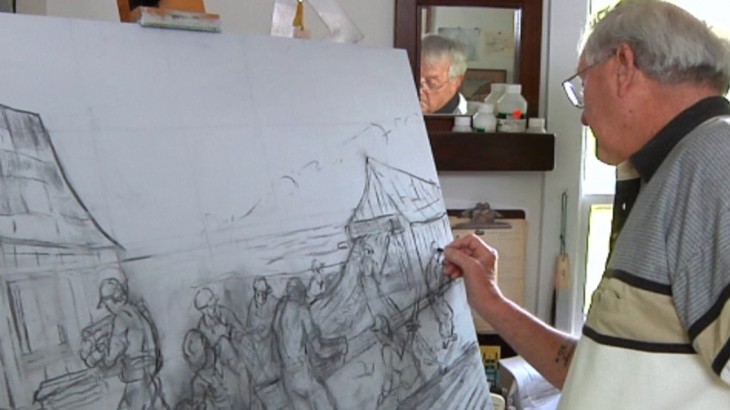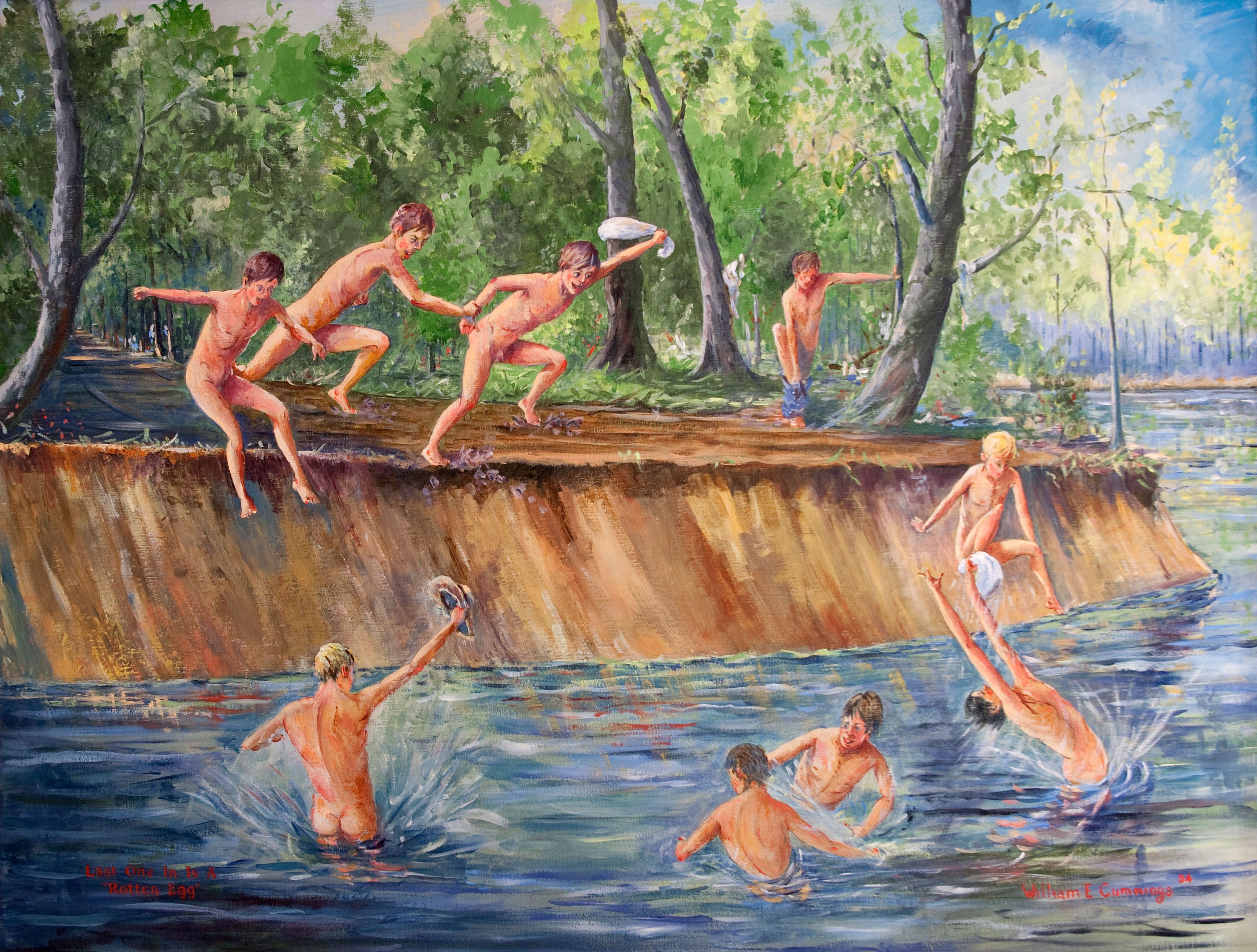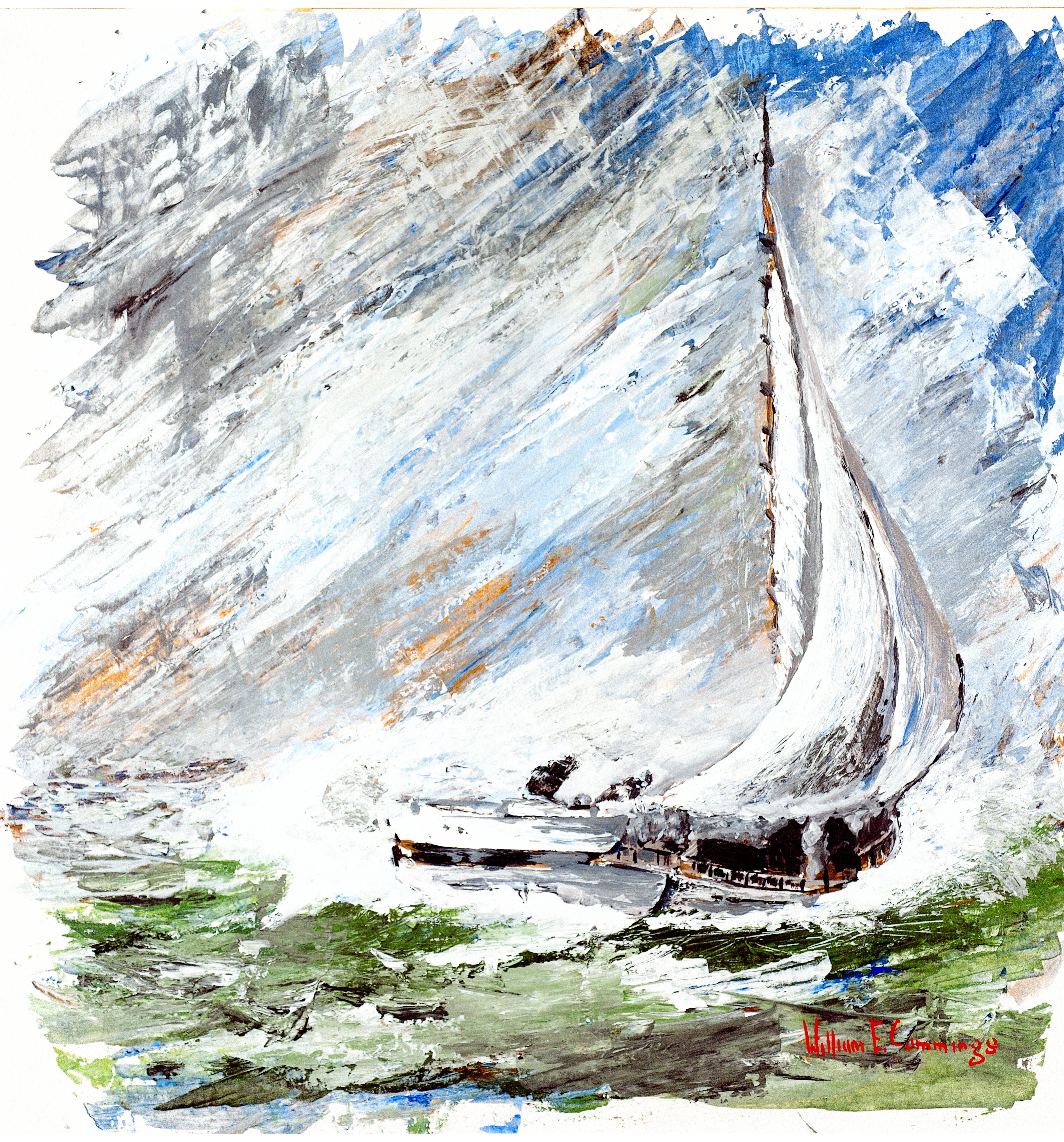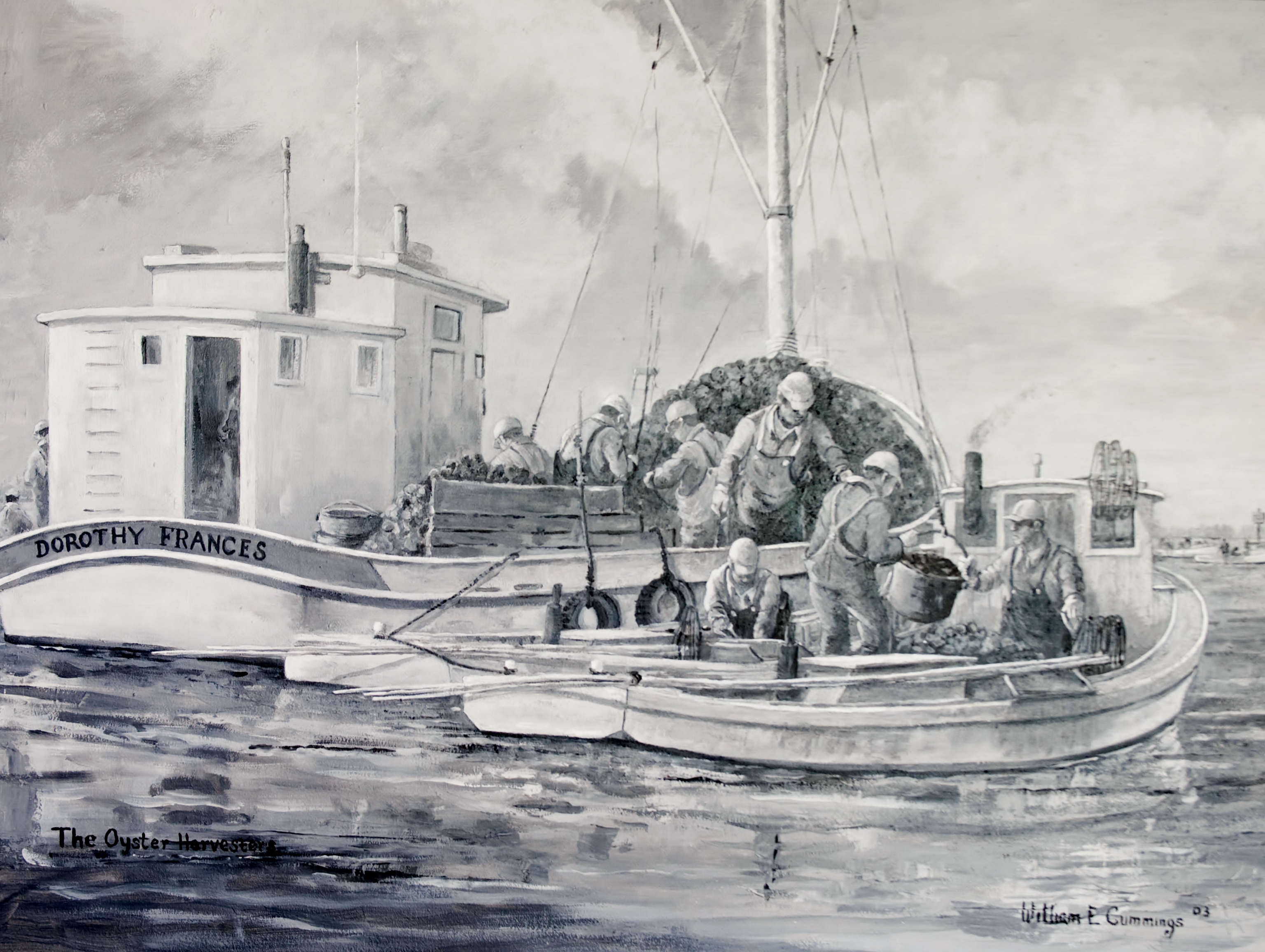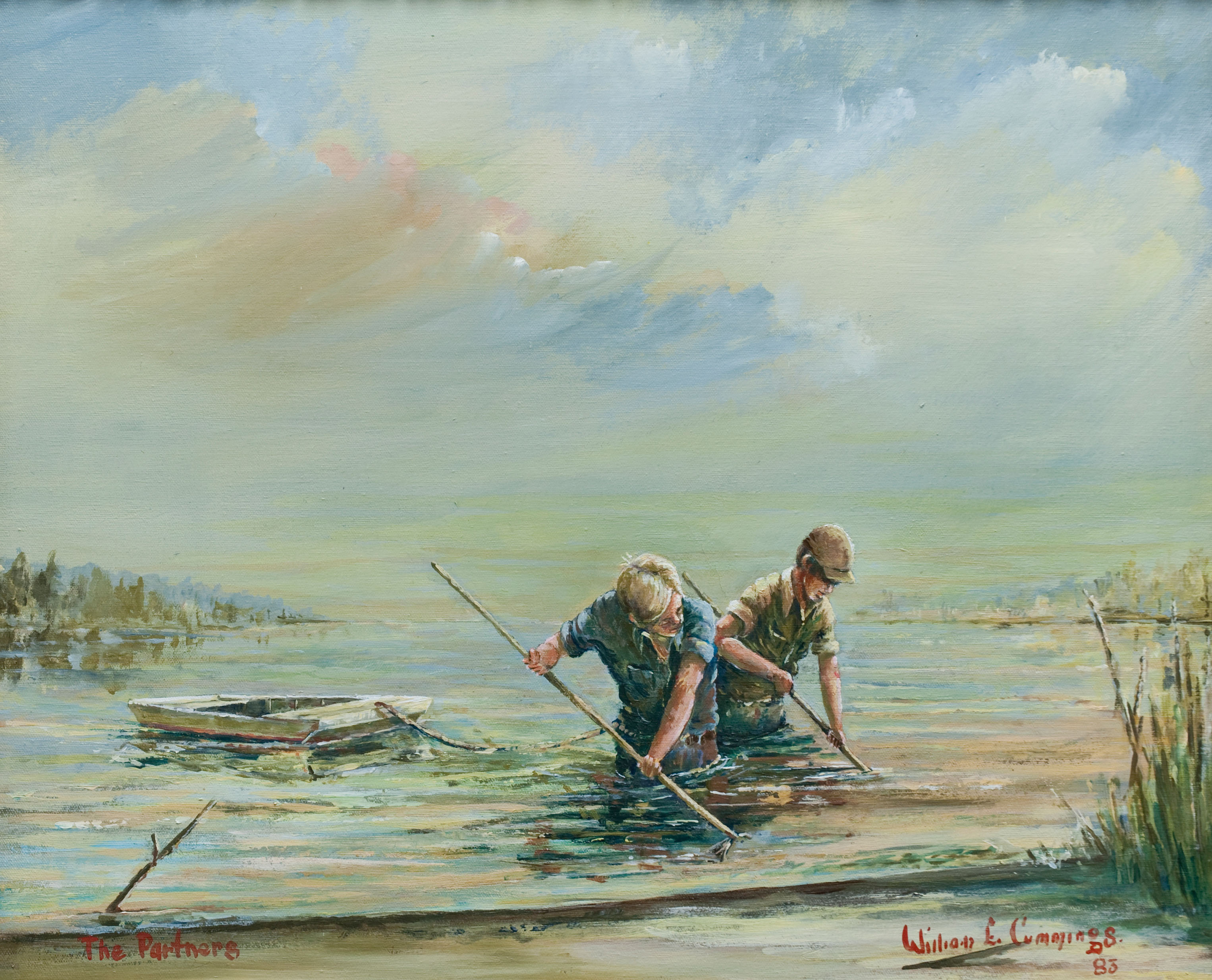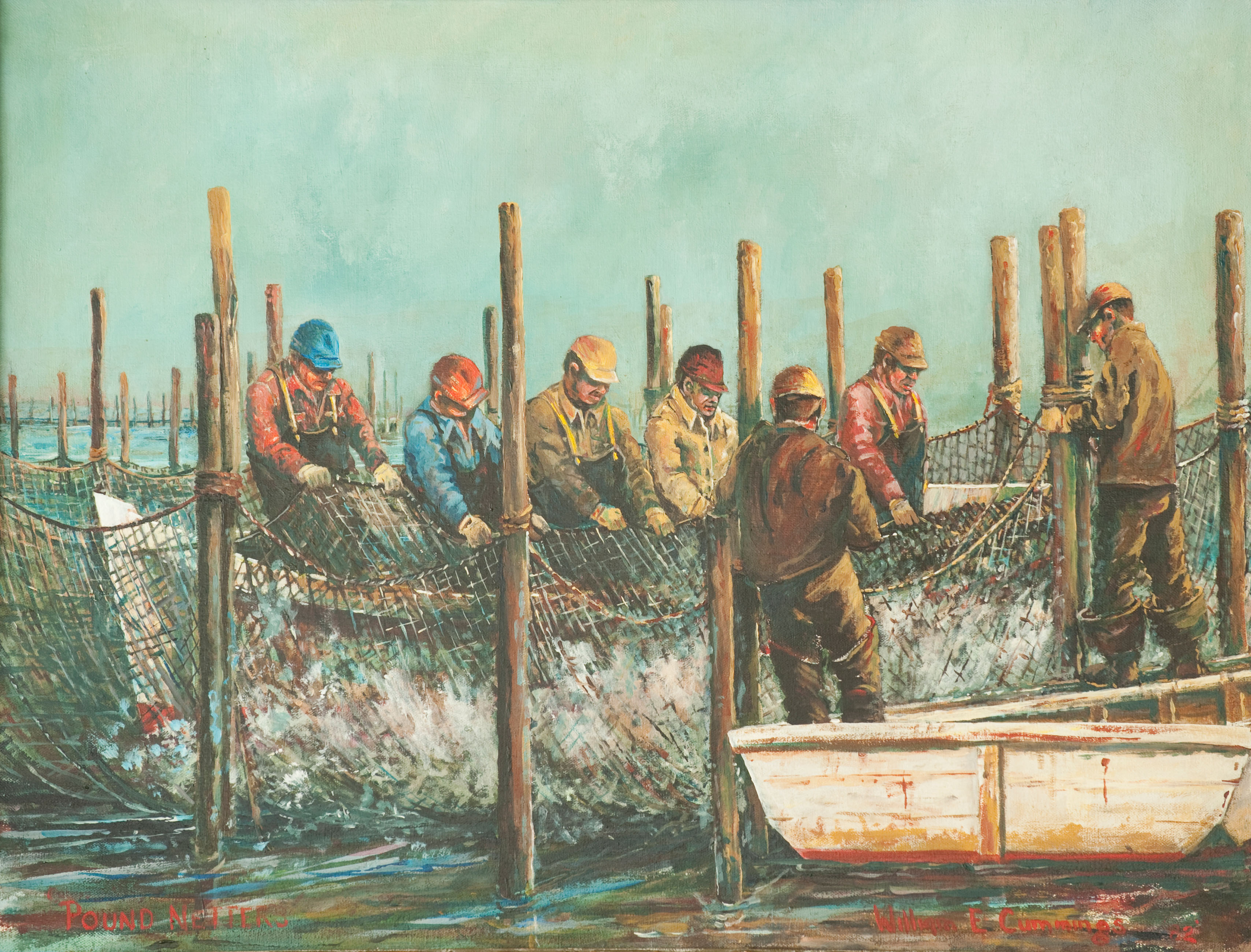Bill Cummings was a Tilghman native whose art recalls a time lost on Tilghman. Painting from only his memory, his images show us a Tilghman many of us have never seen.
While we highlight six of his prints below, 20 prints are available for sale in our Shop.
His self written biography…
I was born in 1927 and when old enough, I began working on the water with my Dad.
My occupation of being a commercial fisherman was very hard but I always enjoyed it. We always had an abundance of seafood.
My interest in Art started at a very young age. At that time, Art was not a subject introduced in school. On my days off from working on the water, because of bad weather, I would study art from books. I had to study anatomy, the color wheel, and see how best to apply these to my art. I first tried small subjects such as a horse, a boat, and a tobacco barn. I felt I was getting to be a pretty good artist (this was just my thought at the time).
As the years rolled by, and I got older, I could see my occupation as a commercial fisherman coming to an end. It was then I decided to put the times on the water and the business, on paper and canvas, My art work was done from memories of days gone by and the waterman’s way of life.
I have finished many paintings pertaining to my life as a waterman and of course, my childhood. I have reflected on the waterman’s way of doing things has changed and gone, never to return. This saddens me very much.
-Bill Cummings
Last One In Is A “Rotten Egg”
The fun really didn’t begin until the bell would ring, ending the school day. It was a race to get to the bay shore to go swimming.
Out of Nowhere
This piece of art work has been created with a palette knife, as you can see I have tried to make this picture as stormy as possible.
The Oyster Harvesters
These boats would be purchase oysters from watermen operating tonging and dredge Boats. Sometimes staying as many as three or four days before getting a load of oysters to take down the bay for processing. As many as three or four buy boats would be here at one time.
The Partners
This picture shows two young boys pushing their dip nets through greass under water to catch soft crabs, peelers, and “doublers”, which is Eastern Shore slang were called “Channie Ike.”
The Poundnetters
Two workboats, fish skiff, and anything that we needed pertaining to poundnetting. We would leave from Tilghman and set course for Turkey Point, at the mouth of the Northeast River.
ZACA at the Pound Net
This piece of art tells the story of six men fishing a Pound Net. The equipment they used and the hard work these men endured.
